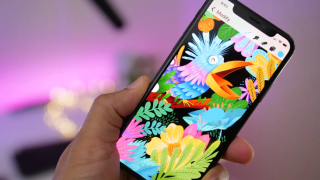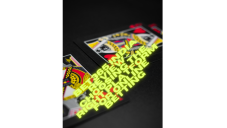This Material Is BulletProof And Can Be 3D-Printed
Aadhya Khatri - Nov 15, 2019

To the eyes, the zigzag and crisscrossing patterns of this material look randomly placed, but in reality, they are the result of careful calculations
- India’s First 3D-Printed Building With Indigenous Construction Materials
- KFC Plans To Make 3D-Printing Chicken And Add It To Their Menu
- Scientists Use Math To 3D Print The World's Strongest Steel
3D printing has long been associated with fragile objects that cannot withstand wear and tear. It is not the case anymore as experts at Rice University have found a way to 3D-print an intricate pattern of plastic that is as hard as diamond.
To the eyes, the zigzag and crisscrossing patterns look randomly placed, but in reality, they are the result of careful calculations. The incredible strength is impressive enough already, but the patterns can be tweaked and tuned to have other properties too.

The idea inspiring the patterns is from the tubulances, the microscopic structures created by carbon nanotubes that are crosslinked. The tubulances are predicted to enable the creation of lightweight yet durable material. However, before this experiment, the design for them had never been materialized due to the logistics hardship of manufacturing carbon nanotubes.
The experts tested the durability of the technology by blasting a cube made by tubulane structure and another by solid polymer by a projectile traveling as fast as 5.8 km/h. While the latter showed a dent and cracks, the former’s second layer managed to stop the projectile, keeping the rest of the cube intact.
The former’s complex polymer lattice was able to collapse and compress so that the kinetic energy is absorbed and the damage is contained, resulting in only a small area is affected.
This finding can benefit fields that rely on durable and lightweight material, including architecture, military, and aerospace. Objects that have to be manufactured from ceramics or metals can be made with cheaper polymers now, thanks to the study.
However, we may have to wait for some more time before the first practical application of this material makes it to reality.
Featured Stories

Features - Jan 23, 2024
5 Apps Every Creative Artist Should Know About

Features - Jan 22, 2024
Bet365 India Review - Choosing the Right Platform for Online Betting

Features - Aug 15, 2023
Online Casinos as a Business Opportunity in India

Features - Aug 03, 2023
The Impact of Social Media on Online Sports Betting

Features - Jul 10, 2023
5 Most Richest Esports Players of All Time

Features - Jun 07, 2023
Is it safe to use a debit card for online gambling?

Features - May 20, 2023
Everything You Need to Know About the Wisconsin Car Bill of Sale

Features - Apr 27, 2023
How to Take Advantage of Guarantee Cashback in Online Bets

Features - Mar 08, 2023
White Label Solutions for Forex

Review - Jul 15, 2022
Comments
Sort by Newest | Popular